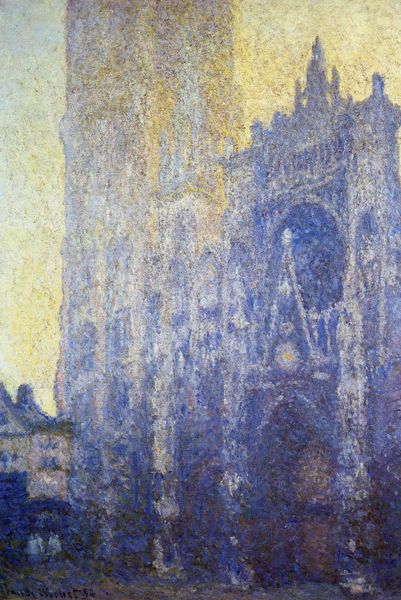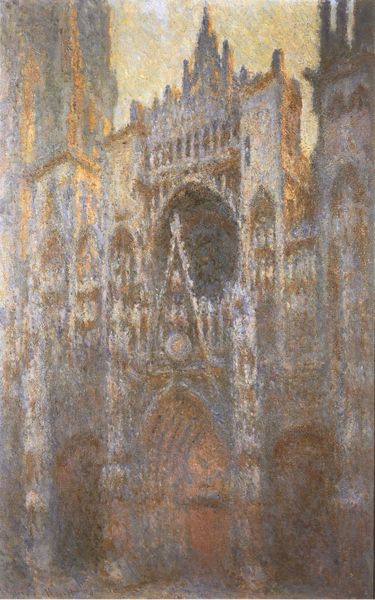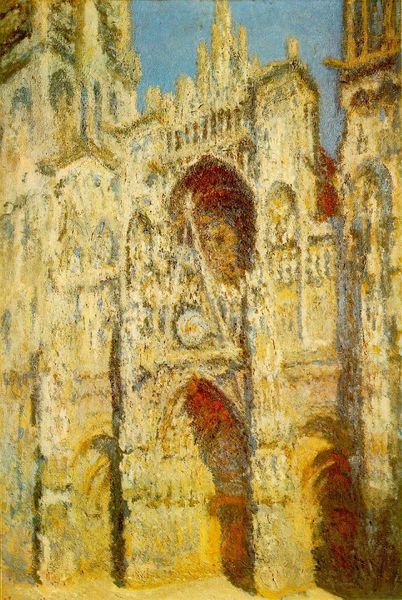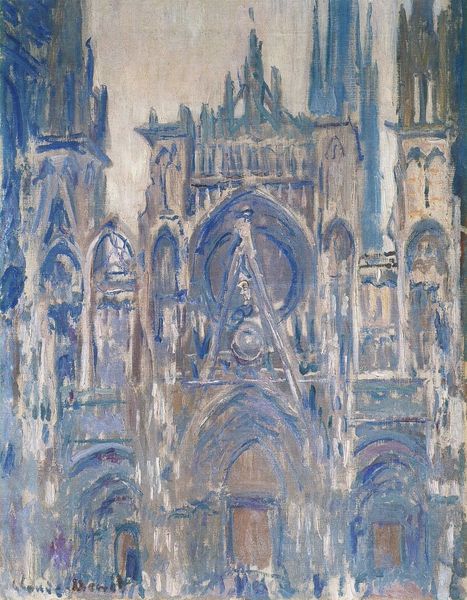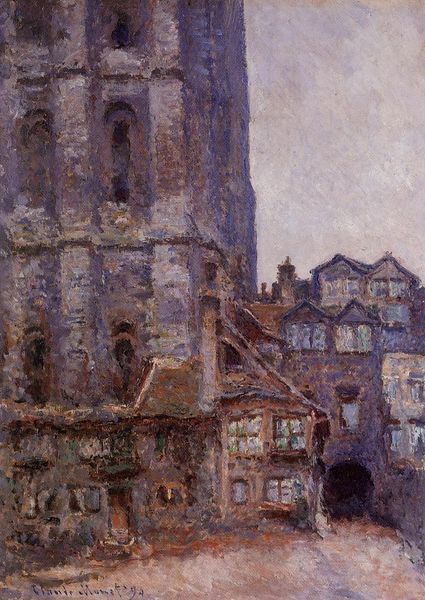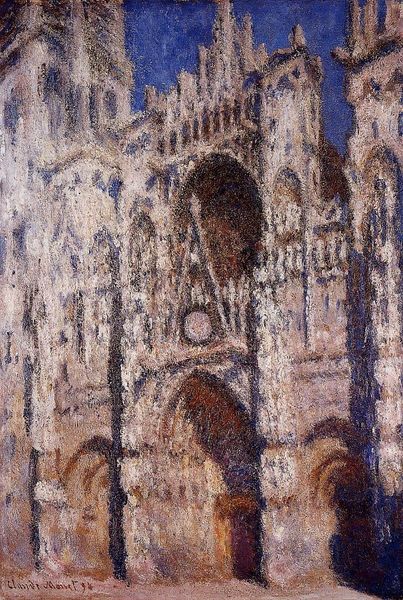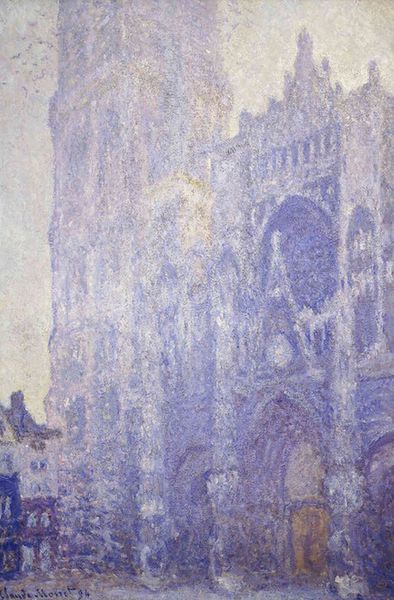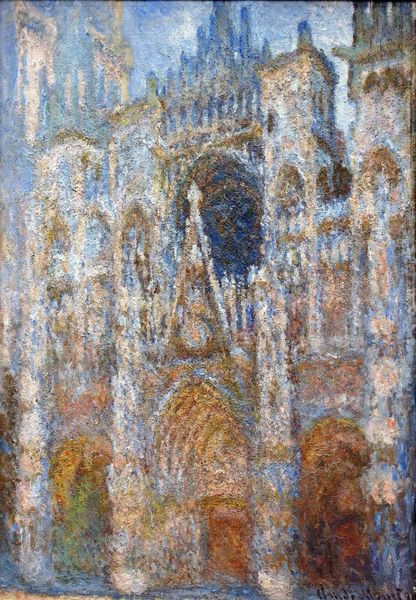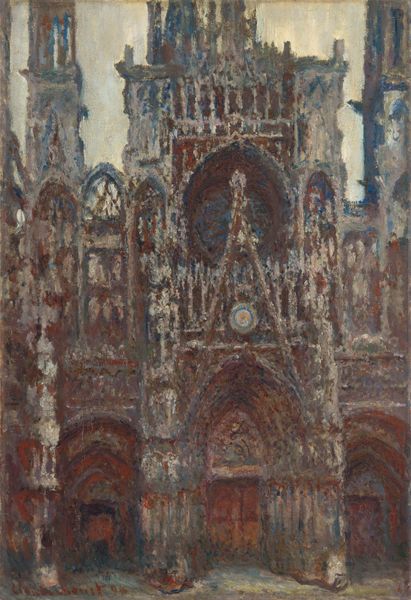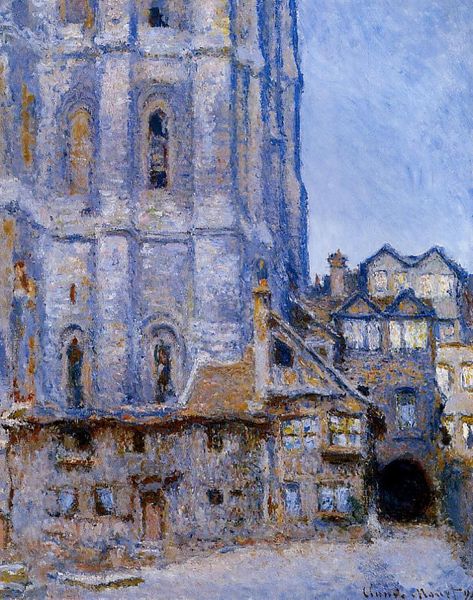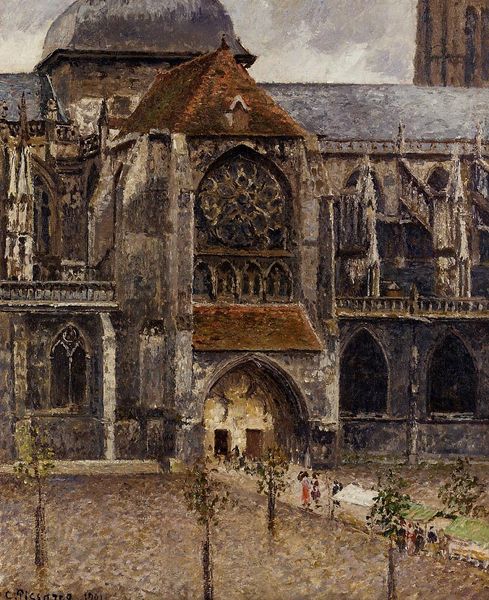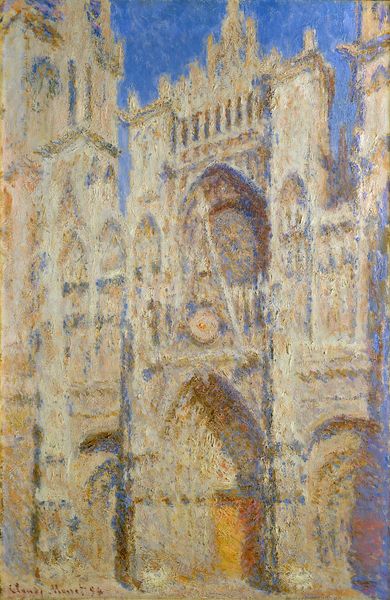
Rouen Cathedral, The Portal and the Tour d'Albene, Grey Weather 1894
0:00
0:00
claudemonet
Musée des Beaux-Arts de Rouen, Rouen, France
Copyright: Public domain
Curator: Monet’s “Rouen Cathedral, The Portal and the Tour d'Albene, Grey Weather," completed in 1894, is part of a series exploring the same subject under different lighting conditions. It's currently housed in the Musée des Beaux-Arts de Rouen, France. Editor: It feels…somber. The cathedral is almost ghostly, like it's dissolving into the fog. The impasto is incredible, though, the way the light catches those thick strokes of oil paint. It is heavy on grey and purplish colors! Curator: Absolutely. These paintings came about in the context of fin-de-siècle anxieties regarding institutional structures such as the church in this painting and a broader crisis of faith. Monet focuses on capturing the fleeting, ephemeral quality of light rather than a realistic depiction, reflecting shifts in philosophical thinking at the time. The cathedral acts as a mirror, reflecting the moods of nature, culture, and individual experience. Editor: And I wonder, thinking about the political power held by the church at this time, to paint its physical representation fading in time, can also imply the crisis in such institutions' power over society. Curator: The play of light across the facade isn't just about visual sensation; it's about deconstructing perceived reality. He invites viewers to see the world through a new lens, one that challenges the grand narratives of institutional authority that are coded in the heavy Gothic architectural elements, that almost dematerialize! Editor: Exactly, it raises questions about power, permanence, and perception itself. What does it mean to capture an institution like the Catholic church in an artwork? It pushes us to deconstruct inherited ideologies about race, class, and gender. The materiality is so evocative that even just through brushstrokes, the political and social commentary that arise can be interpreted from various standpoints! Curator: Indeed, and understanding this historical moment really deepens our interpretation of Monet's project. It allows for nuanced analysis, rather than just seeing it as pretty. Editor: For me, looking at it with the historical context provided opens doors of opportunities and possibilities, allowing me to create unique arguments and narratives on the artwork. Curator: A perfect example of art as a mirror to society! Editor: Couldn't agree more.
Comments
No comments
Be the first to comment and join the conversation on the ultimate creative platform.
